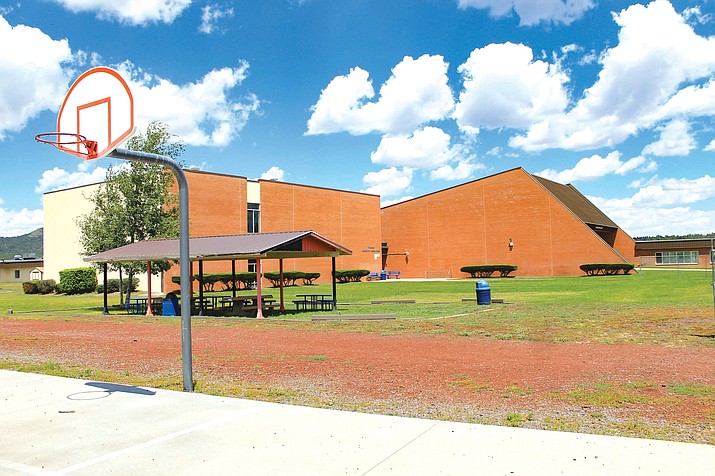Williams Elementary-Middle School receives results-based funding
WILLIAMS, Ariz. — Williams Elementary-Middle School (WEMS) was recently awarded $85,867 in results-based funding from the Arizona Department of Education for its performance on the state-wide testing.
The results-based funding initiative, established in 2017 by Gov. Doug Ducey, distributed up to $68.6 million for school districts based on a strategic formula that is based on AzMERIT passing rates and family income.
WEMS is one of seven out of 56 Coconino County schools that qualified for FY 2020 funding. Of the seven qualifying schools, four are charter schools and three are traditional schools. This includes Grand Canyon School. Ash Fork School District, in Yavapai County, also received funding.
“It validated all the effort and hard work by the students, staff and our families that we feel like we’ve been doing,” said WEMS Principal Carissa Morrison. “It proved we are doing really well when you look at our performance at the state level.”
The ADE calculates the funding for school districts who meet certain eligibility requirements. Schools with less than 60 percent qualifying for free or reduced lunches and perform in the top 13 percent of all schools statewide based on passing scores in math and language arts on the 2018 AzMERIT receive $225 per student.
Schools with 60 percent or more students who are eligible for free or reduced lunches and perform in the top 13 percent of schools qualify to receive $400 per student. Those schools who perform in the top 27 percent receive $225 per student.
WEMS has a 69 percent free or reduced lunch rate, and had AzMERIT passing rates that were in the top 27 percent of schools. The funding was calculated at the rate of $225 per student.
“We are essentially in the top quarter of schools throughout the state, which is exciting,” Morrison said. “This was really validating because when you compare apples to apples we are in the top tier, maybe not the top 13 percent, but the top 27, which feels really good.”
Money received by the schools must be used to directly enhance, expand or replicate the school site and not be used to replace budgeted money. The majority of the money must be used for teacher salaries, hiring, leadership, classroom supplies or other strategies to sustain outcomes for students at the school.
“The recognition of why we got it meant a lot to us,” she said. “We have students from challenging situations and they are achieving.”
Morrison said a team of staff developed a plan for distribution of the funding at WEMS. The committee considered various options and ultimately chose to distribute the money for professional development, classroom supplies and staff stipends, similar to what most schools do with the funds.
“You get raises based on staff experience, but this is an opportunity where we can actually give staff money, which is nice,” Morrison said.
The committee felt the stipends should not only go to certified staff, but also classified staff who work with WEMS students.
“The rationale for giving classified staff members stipends, was that they contributed to the overall positive climate and culture the enabled school success by giving out SOARS positive behavior tickets and promoting student achievement throughout the year,” Morrison said.
The maximum amount for a certified stipend, teachers and administrators, is $2,000. The maximum amount for classified stipends if $500, according to Morrison. She said there are about 50 staff who will receive the money.
Certified staff members will also have a $350 budget for professional development.
The committee also decided to add more iPads for the K-2 classrooms. After consulting the technology director, the committee chose to purchase eight to 10 new iPads with supporting equipment.
- Driver identified in fatal accident on Perkinsville Road Sept. 19
- Latest Tik Tok challenges causing problems for Williams Unified School District
- Search at Grand Canyon turns up remains of person missing since 2015
- Plane wreckage and human remains found in Grand Canyon National Park
- Pumpkin Patch Train departs Williams starting Oct. 5
- Update: Man missing in Grand Canyon National Park hike found alive
- Receding water levels at Lake Powell reveal missing car and driver
- Man sentenced for attack on camper at Perkinsville
- Column: Lumber prices expected to stay high through 2022
- Elk rut season in Grand Canyon: What you need to know
SUBMIT FEEDBACK
Click Below to:






